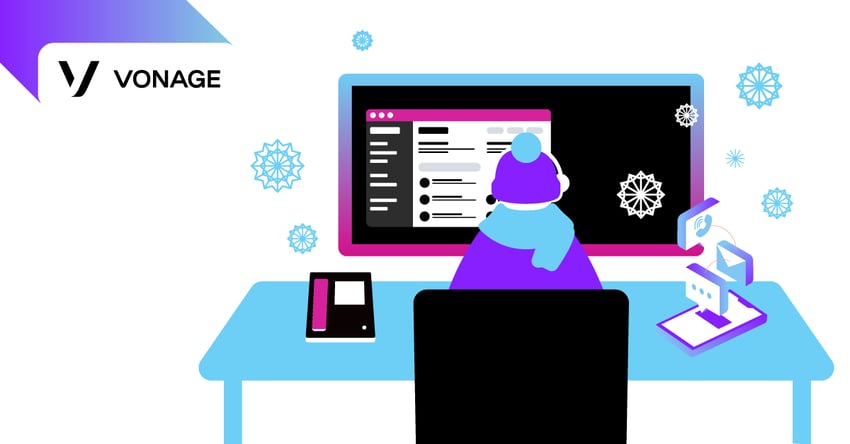How to Create a Practical Business Continuity Plan for Your Small Business
If the last few years have taught us anything, it's to expect the unexpected. Whether facing the good (a sudden surge in customer demand), the bad (a pandemic or natural disaster), or the ugly (a cyberattack), businesses should always be prepared to handle disruptions that can affect their ability to operate.

A business continuity plan can help ensure your customers and employees have access to data and communication tools, no matter what happens. So, how do you create a continuity plan for your small business that keeps operations running smoothly during times of change or uncertainty?
What Is a Business Continuity Plan?
Business continuity and disaster recovery are terms that are often used interchangeably, but they are not the same thing. Disaster recovery is a plan for how to react in case of an emergency. A business continuity plan prepares your business to avoid disruptions so it can operate efficiently, whether you're experiencing a potential disaster or just growing pains.
According to Sanjay Macwan, chief information security officer at Vonage, "Organizations that create ongoing processes for dealing with change, rather than trying to deal with each issue as it arises, stand to enjoy competitive advantages over those that are not built to adapt to their dynamic surroundings."
To minimize the risk associated with change, small businesses need their processes — and their technology stack — to be flexible, accessible, and scalable.
6 Tips for Building a Business Continuity Plan
What goes into business continuity planning? What should you consider, and what should you include? Get started with these tips.
1. Prepare Your Team to Work From Anywhere
Critical business functions need continuous access to critical business technology. Whether a storm causes a temporary power outage at your office or a COVID-19 outbreak shutters your office for weeks, you need your most essential workers to keep working.
A best-in-class cloud communications solution with customer relationship management (CRM) integration ensures that your team has 24/7 access to the same voice, video, and messaging capabilities they're used to, wherever they're working for the day. All they need is an internet-connected device and a login to access the platform and all the third-party apps, application programming interfaces (APIs), and integrated customer data.
2. Keep Customers in the Loop Across Channels
Customers need to know about changes or disruptions that might impact their experience with your brand. To ensure they receive important messages and can reach your business with urgent questions, you need the ability to interact with them on their preferred channels.
If you have an omnichannel contact center with full CRM integration, your team can seamlessly communicate with customers via voice, text, messaging apps, and social media platforms. You can also leverage communication APIs to send automated messages and alerts and embed communication options on your website and social media pages to make it easier for customers to reach you.
3. Plan for Spikes, Growth, and Other Good News
Not all business disruptions are bad. Maybe you receive unexpected media coverage or an online influencer recommends your product to their followers, and suddenly your phones are ringing off the hooks. Or maybe your customer base is growing faster than you can hire customer service agents. These welcome changes can be disruptive if you can't quickly scale communications.
Legacy communications technology requires you to install new hardware and buy software licenses for new users — that is, if you have the space for new hires and can recruit them. With cloud communications, adding new users is as simple as creating logins for them, and because you pay as you go, you can easily scale back down if the increased demand suddenly subsides. You can also leverage chatbot and virtual assistant APIs to answer simple questions and enable self-service, so your human team gets some much-needed backup during hectic times.
4. Choose Trusted Vendors With Scalable Cloud Solutions and Industry Expertise
Whether you're experiencing a sudden emergency or an unexpected surge in business, speed is absolutely essential. You need a communications solution you can rely on for an immediate response.
The right communications provider is more than a vendor; it's a strategic partner with deep industry expertise, a proven track record in business continuity, and a best-in-class customer service team you can reach 24/7. Anything less could leave you in the lurch when your communication needs are most urgent.
5. Ensure Compliance
A trusted vendor can also help your business navigate the complexities of consumer privacy compliance. Different industries have different rules, as do different countries or regions. For example, if you do business within the European Union, you'll need to comply with the General Data Protection Regulation — a long list of data privacy laws that govern business communications with citizens.
The right cloud provider is compliant with current regulations and prepared for any changes to international privacy laws.
6. Plan to Communicate Your Plan
Even the best-laid business continuity plan won't be much help if your team and customers aren't properly informed. By proactively and confidently sharing this information, you reassure both your employees and your customers that your business is prepared to weather any emergency or sudden change in plans.
It's also important to have a strategy for how you'll let stakeholders know when it's time to put elements of the continuity plan in place. First, consider who needs to know. In addition to your team and customers, you might want to loop in your suppliers, regulators, community, or members of the media. Then, decide which channels are best suited for engaging each audience. With cloud communications, they're all available to you.
As a small to mid-size business leader, it's tempting to get caught up in the "busyness" of business. But a little business continuity planning can go a long way when the unexpected happens — because at some point, it will.